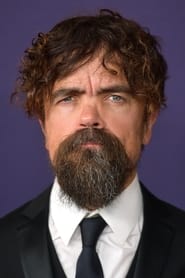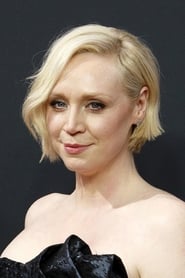
Ask Your Own Question
What is the plot?
The episode "Fire and Blood" begins with a somber atmosphere in Winterfell, where the Stark family is reeling from the death of Ned Stark. Robb Stark, now the head of the family, is filled with anger and determination to avenge his father's death. He gathers his bannermen and decides to march south to confront the Lannisters, seeking justice for the execution of his father. The weight of leadership rests heavily on his shoulders, and he feels the pressure to protect his family and honor his father's legacy.
In King's Landing, Cersei Lannister is consolidating her power after Ned's execution. She is cold and calculating, ensuring that her children, Joffrey, Myrcella, and Tommen, are secure in their positions. Joffrey, emboldened by his newfound authority, revels in his cruelty, particularly towards Sansa Stark, who is still a prisoner in the Red Keep. Sansa is terrified and heartbroken, feeling utterly powerless as she witnesses Joffrey's brutality.
Meanwhile, Tyrion Lannister returns to King's Landing after being appointed as Hand of the King. He quickly assesses the political landscape and realizes the precarious situation he is in. Tyrion's sharp wit and intelligence come into play as he navigates the treacherous waters of court politics. He confronts Cersei about her plans and begins to strategize on how to maintain some semblance of order in the realm.
In the North, Bran Stark continues to have visions that connect him to the mystical elements of Westeros. He experiences a dream where he sees a three-eyed raven, which symbolizes his growing connection to the supernatural. Bran's journey is one of self-discovery, as he grapples with his identity and the implications of his abilities.
Back in King's Landing, Cersei and Joffrey plot to eliminate any threats to their rule. They decide to execute Ned Stark's allies, including the loyalist Lord Stark supporters. This decision showcases their ruthlessness and willingness to maintain power at any cost. The tension in the city escalates as the Stark loyalists realize they are in danger.
In a pivotal moment, Robb Stark receives news of his father's death and the Lannisters' treachery. He rallies his bannermen, including Theon Greyjoy, and they prepare for war. Robb's resolve strengthens as he vows to take back what is rightfully his and protect his family. The Stark forces begin to mobilize, setting the stage for the impending conflict.
Simultaneously, Daenerys Targaryen is in the midst of her own transformation. After the death of her husband, Khal Drogo, she is left to navigate her grief and the power dynamics of her new life. Daenerys enters the funeral pyre with Drogo's body, determined to reclaim her identity and heritage. As the flames engulf her, she emerges unscathed, with three newly hatched dragon eggs, symbolizing her rebirth and the resurgence of House Targaryen.
The episode culminates with the Stark forces preparing for battle against the Lannisters, while Daenerys stands as a newly empowered figure with dragons at her side. The stakes are higher than ever, and the stage is set for the conflicts that will shape the future of Westeros. The final scenes leave viewers with a sense of impending doom and the realization that the game of thrones is far from over.
What is the ending?
In the ending of "Fire and Blood," the season finale of Game of Thrones, several key events unfold that set the stage for future conflicts. Daenerys Targaryen hatches three dragon eggs, marking the rebirth of dragons in the world. Meanwhile, in the North, Bran Stark has a prophetic vision, and Jon Snow faces the reality of his place in the Night's Watch. The episode concludes with a sense of foreboding and the promise of new beginnings.
As the episode begins, we find ourselves in the aftermath of the tumultuous events that have transpired throughout the season. The camera pans over the desolate landscape of the Dothraki Sea, where Daenerys Targaryen stands amidst the funeral pyre of her beloved Khal Drogo. The air is thick with smoke and the scent of burning wood as she prepares to honor her husband's memory. With a fierce determination in her eyes, she places the three dragon eggs on the pyre, a symbol of her Targaryen heritage and her hope for the future.
As the flames engulf the pyre, Daenerys steps into the fire, her skin glistening with heat, yet she remains unscathed. The fire roars around her, and in a moment of intense emotion, she embraces the flames, embodying the spirit of her ancestors. The camera captures the awe and fear in the eyes of her loyal followers, who witness this miraculous event. When the fire finally subsides, Daenerys emerges, reborn, with three newly hatched dragons clinging to her, their tiny bodies writhing and chirping. This moment signifies not only the return of dragons to the world but also Daenerys's transformation into a powerful leader, ready to reclaim her family's throne.
Meanwhile, in the North, Bran Stark is grappling with his newfound abilities. He has been having visions that connect him to the past and the future, revealing glimpses of the Stark family and the looming threat of the White Walkers. In a poignant scene, Bran shares a moment with his brother, Robb, who is preparing to lead the Stark forces. Robb is filled with a sense of duty and responsibility, embodying the weight of leadership that has fallen upon him after the loss of their father, Eddard Stark.
In the Wall, Jon Snow is faced with the reality of his commitment to the Night's Watch. He bids farewell to his family, particularly to Robb, who is heading south to fight for their family's honor. Jon's internal struggle is palpable as he grapples with his identity as a Stark and his duty as a member of the Night's Watch. He understands that he must leave behind the life he knows to protect the realm from the dangers that lie beyond the Wall.
The episode culminates with a sense of foreboding as the camera shifts back to Daenerys, now surrounded by her dragons. The scene is both triumphant and ominous, hinting at the challenges she will face as she seeks to reclaim the Iron Throne. The final shot of the episode lingers on her face, a mixture of determination and vulnerability, as she holds her dragons close, symbolizing her newfound power and the heavy burden of her destiny.
In summary, the fates of the main characters at the end of "Fire and Blood" are as follows: Daenerys Targaryen emerges as a powerful figure with the rebirth of dragons, signifying her readiness to pursue her claim to the throne. Bran Stark continues to explore his mystical abilities, hinting at his crucial role in the future. Jon Snow embraces his duty to the Night's Watch, setting the stage for his character's development in the face of impending threats. Each character's journey reflects the overarching themes of power, identity, and the consequences of their choices, leaving viewers eager for the unfolding saga.
Is there a post-credit scene?
In "Fire and Blood," the season finale of Game of Thrones, there is no post-credit scene. The episode concludes with significant events that set the stage for the following seasons, focusing on the aftermath of key character arcs and the implications of their actions. The final moments center around Daenerys Targaryen, who emerges from the funeral pyre of her deceased husband, Khal Drogo, with three newly hatched dragon eggs, marking a pivotal moment in her transformation and the resurgence of dragons in the world. This powerful scene encapsulates the themes of rebirth and the reclaiming of power, leaving viewers with a sense of anticipation for what is to come in the next season.
What happens to Daenerys Targaryen after she hatches the dragon eggs?
In the final scenes of the episode, Daenerys Targaryen emerges from the funeral pyre of her husband Khal Drogo, unscathed and with three newly hatched dragonlings. This moment signifies her transformation into the Mother of Dragons and marks the beginning of her journey to reclaim the Iron Throne.
How does Jon Snow react to the news of his father's death?
Jon Snow is devastated by the news of his father, Eddard Stark's execution. He grapples with feelings of anger and helplessness, realizing the danger that his family is in and the political turmoil that surrounds them. His loyalty to his family and his sense of honor are deeply tested.
What is the significance of the Iron Throne in this episode?
The Iron Throne symbolizes the ultimate power in Westeros. In this episode, it is occupied by King Joffrey Baratheon, who is cruel and immature, showcasing the instability of his rule. The throne's presence serves as a reminder of the ongoing struggle for power and the consequences of betrayal.
What does Robb Stark decide to do after Eddard Stark's death?
Robb Stark, upon learning of his father's execution, rallies his bannermen and decides to march south to confront the Lannisters. This decision marks his transition from a boy into a leader, as he seeks to avenge his father's death and protect his family.
How does Tyrion Lannister manipulate the situation in King's Landing?
Tyrion Lannister uses his wit and intelligence to navigate the treacherous political landscape of King's Landing. He offers his counsel to Joffrey and Cersei, positioning himself as a key player in the power dynamics, while also seeking to protect his family and secure his own position.
Is this family friendly?
"Game of Thrones," particularly in Season 1, Episode 10 titled "Fire and Blood," contains several elements that may be considered objectionable or upsetting for children or sensitive viewers. Here are some aspects to be aware of:
-
Violence and Death: The episode features scenes of violence, including battles and the aftermath of conflict, which may be graphic and intense.
-
Emotional Trauma: Characters experience significant emotional distress, including grief and loss, which can be heavy and unsettling.
-
Themes of Betrayal and Power Struggles: The narrative explores dark themes such as betrayal, ambition, and the harsh realities of power, which may be difficult for younger viewers to process.
-
Mature Language: The dialogue includes strong language and adult themes that may not be suitable for children.
-
Graphic Imagery: There are moments that depict blood and injury, which can be disturbing.
-
Complex Moral Dilemmas: Characters face morally ambiguous situations that may be confusing or troubling for younger audiences.
These elements contribute to the overall mature tone of the series, making it more appropriate for adult viewers.
























